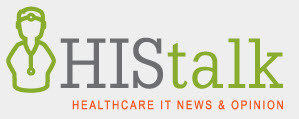05-13-2024, 11:20 PM
FDB Expands its Medication Instructions to Include Translations of Hindi & Punjabi, 2 of the Fastest-Growing Languages in the US
Personalized medication instructions can now be provided to patients in 33 languages via the Meducation® Solution
SOUTH SAN FRANCISCO, May 13, 2024 -- FDB (First Databank), the leading provider of drug knowledge that helps healthcare professionals make precise decisions, announced today that it has added two of the fastest-growing languages in the United States to the content library for FDB's Meducation® Solution. Meducation is a cloud-based solution that enables providers and pharmacists to deliver simplified and personalized medication instructions to all patients.
Meducation's easy-to-understand, patient-specific medication labels and educational content can now be made available to patients in Hindi and Punjabi through the solution. This expands to 33 the number of language options Meducation accommodates.
FDB has added Hindi and Punjabi as personalization options for Meducation content due to combined demand from customers and a larger patient population speaking the languages. In 2022, a report from the U.S. Census Bureau highlighted the two languages as among the fastest growing in the country. In 2019, for example, more than 303,000 American residents spoke Punjabi in their home, up from only 19,300 in 1980. Similarly, nearly 900,000 residents spoke Hindi in the home in 2019, up from 317,000 in 2000, which was the first year Hindi was tracked in the United States as a separate language.
In an earlier Meducation language library expansion, FDB added the ability to generate labels and content in Japanese and Lau. The U.S. Census Bureau report shows that between 1980 and 2019, the number of Japanese speakers in the United States grew by 35 percent.
"The U.S. is much more ethnically and linguistically diverse today, but patients from all cultures and backgrounds have a common desire for optimal health and well-being, which is closely tied to understanding how, why and when to take medications," said Charles Lee, MD, senior director of clinical knowledge and senior advisor for health literacy and language barriers at FDB. "That is why we are continuously updating and expanding the translations of the medication instructions within Meducation so that we can help prescribers and pharmacists easily deliver simple and easy-to-follow information for patients across the spectrum of language- and health-literacy levels."
Limited English proficiency (LEP) can be a social determinant of health barrier for patients and families, leading to poorer outcomes and greater health inequities. Patients with LEP, for example, are at greater risk of readmission for chronic conditions due to uncertainty over how to take their medications and what symptoms require a clinical intervention.
These risks are prompting states to implement prescription label regulations that require pharmacies to print labels in the patient's preferred language. In 2020, the state of Oregon passed a law for pharmacies to print labels in 1 of 14 languages, in addition to English, at the patient's request. Similar laws in New York and California have also been enacted. A study of the New York label requirement published nine years after the law passed found that pharmacists believed it did expand medication access to patients in the state with LEP.
In addition to improving access, having prescription label and educational content available in the language most often spoken at home can help prevent adverse drug events and, by making the labels more patient-centered, can increase adherence to care plans.
Meducation enables this through simplified, patient-specific medication instructions, written at a 5th-to-8th grade reading level, with features such as medication administration checklists, simplified calendar views, and how-to explanatory videos all in one place. Content seamlessly integrates into clinical workflows, enabling prescribers to provide effective, personalized medication lists and instructions in less time and with fewer steps.
About FDB
FDB (First Databank) creates and delivers the world's most powerful drug knowledge that ignites, inspires, and illuminates critical medication decisions. We collaborate with our partners to help improve patient safety, operational efficiency, and health outcomes. Our drug databases drive healthcare information systems that serve the majority of hospitals, physician practices, pharmacies, payers, and all other areas of healthcare and are used by millions of clinicians, business associates, and patients every day. Please visit us at https://www.fdbhealth.com/, or follow us on LinkedIn and YouTube.
About Hearst Health
The mission of Hearst Health is to help guide the most important care moments by delivering vital information into the hands of everyone who touches a person's health journey. Care guidance from Hearst Health reaches the majority of people in the U.S. The Hearst Health network includes FDB (First Databank), Zynx Health, MCG, Homecare Homebase and MHK. Hearst also holds a minority interest in the precision medicine and oncology analytics company Aster Insights. Follow Hearst Health on LinkedIn @Hearst-Health.




